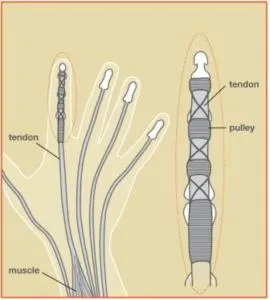
What are Vessel Repairs?
Vessel repairs are surgical procedures aimed at restoring the structure and function of damaged or injured blood vessels. Blood vessels can become injured due to trauma, lacerations, blunt force, or certain medical conditions, leading to symptoms such as bleeding, hematoma formation, or impaired circulation. Vessel repair procedures aim to reconnect, patch, or bypass damaged vessel segments to restore blood flow and prevent complications such as hemorrhage or ischemia.
How are Vessel Repairs performed?
Vessel repair procedures may involve various surgical techniques depending on the type, location, and extent of vessel injury. Common approaches include direct vessel repair, vessel grafting, vessel ligation, or vascular bypass surgery. The specific technique chosen depends on factors such as the size, accessibility, and severity of the vessel injury, as well as the patient's overall health and hemodynamic stability.
Who is a candidate for Vessel Repairs?
Individuals who have sustained vessel injuries resulting in symptoms such as bleeding, hematoma formation, or impaired circulation may be candidates for vessel repair. Common indications for vessel repair include traumatic vessel injuries, arterial or venous lacerations, vessel aneurysms, or vessel occlusions resulting from medical conditions such as atherosclerosis or thrombosis. A consultation with a vascular surgeon or trauma surgeon is essential to determine the most appropriate treatment approach based on individual circumstances.
What are the benefits of Vessel Repairs?
Vessel repair procedures offer numerous benefits for individuals seeking to restore blood flow and prevent complications associated with vessel injuries. Proper vessel repair can help stop bleeding, promote wound healing, restore tissue perfusion, and prevent ischemic complications such as tissue necrosis or limb loss. By addressing vessel injuries promptly and effectively, individuals can achieve improved vascular function and quality of life.
What is the recovery process like after Vessel Repairs?
Recovery from vessel repair procedures depends on the type and extent of the vessel injury, as well as individual healing factors. Following surgery, patients may undergo a period of observation, wound care, and rehabilitation to monitor vascular function and prevent complications. The timeline for recovery varies depending on factors such as the location and severity of the vessel injury, as well as the success of the surgical repair. It's essential to follow post-operative instructions provided by the surgeon and attend follow-up appointments to monitor healing and vascular function.
What are the risks and complications associated with Vessel Repairs?
Like any surgical procedure, vessel repairs carry certain risks and complications. These may include bleeding, hematoma formation, infection, vessel thrombosis (clotting), vessel stenosis (narrowing), or vessel graft failure. Additionally, individuals with complex vessel injuries or associated medical conditions may be at increased risk for complications. However, the benefits of vessel repair often outweigh the risks, especially when vascular function is compromised and timely intervention is necessary to prevent tissue ischemia or loss.
Why choose VMG Hospital for Vessel Repairs?
VMG Hospital in Hisar, Haryana, is a trusted provider of comprehensive vascular and trauma care and treatment for individuals with vessel injuries and conditions. Our team of skilled vascular surgeons and trauma surgeons has extensive experience in diagnosing and treating vessel injuries, ensuring timely and effective vessel repair to optimize outcomes. With state-of-the-art facilities and a patient-centered approach, VMG Hospital is committed to delivering compassionate care and helping patients restore vascular function and regain quality of life.